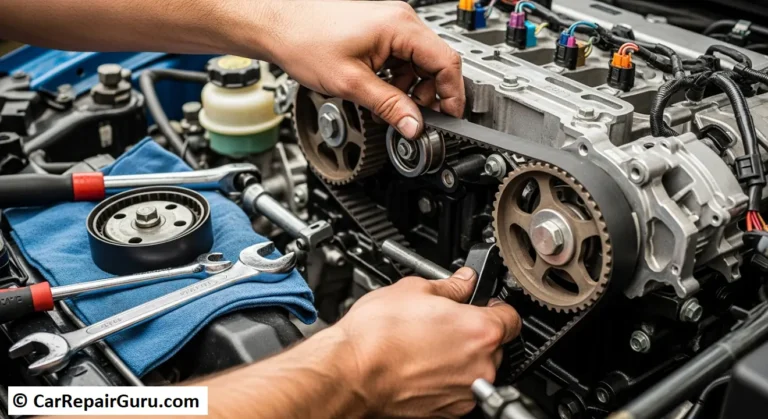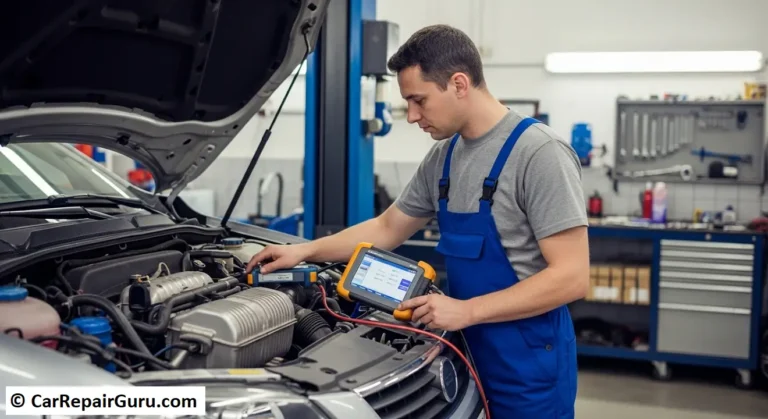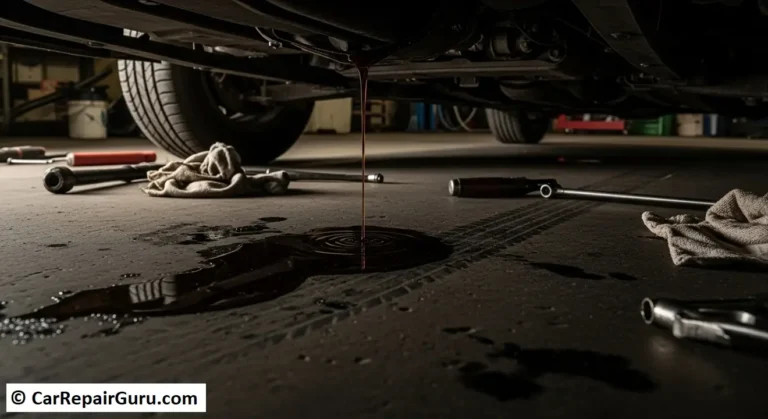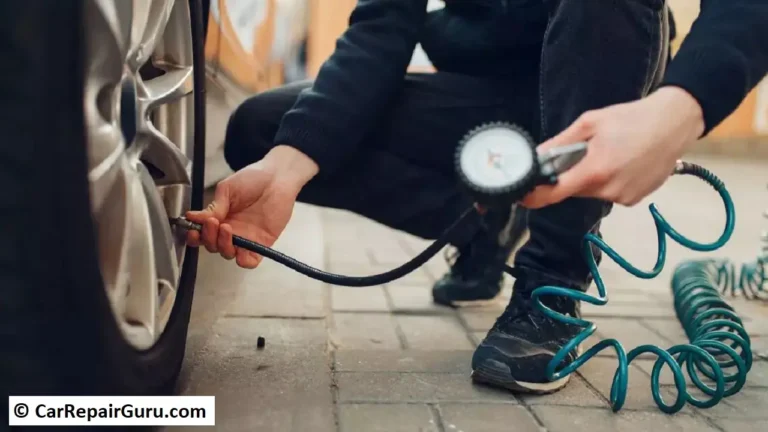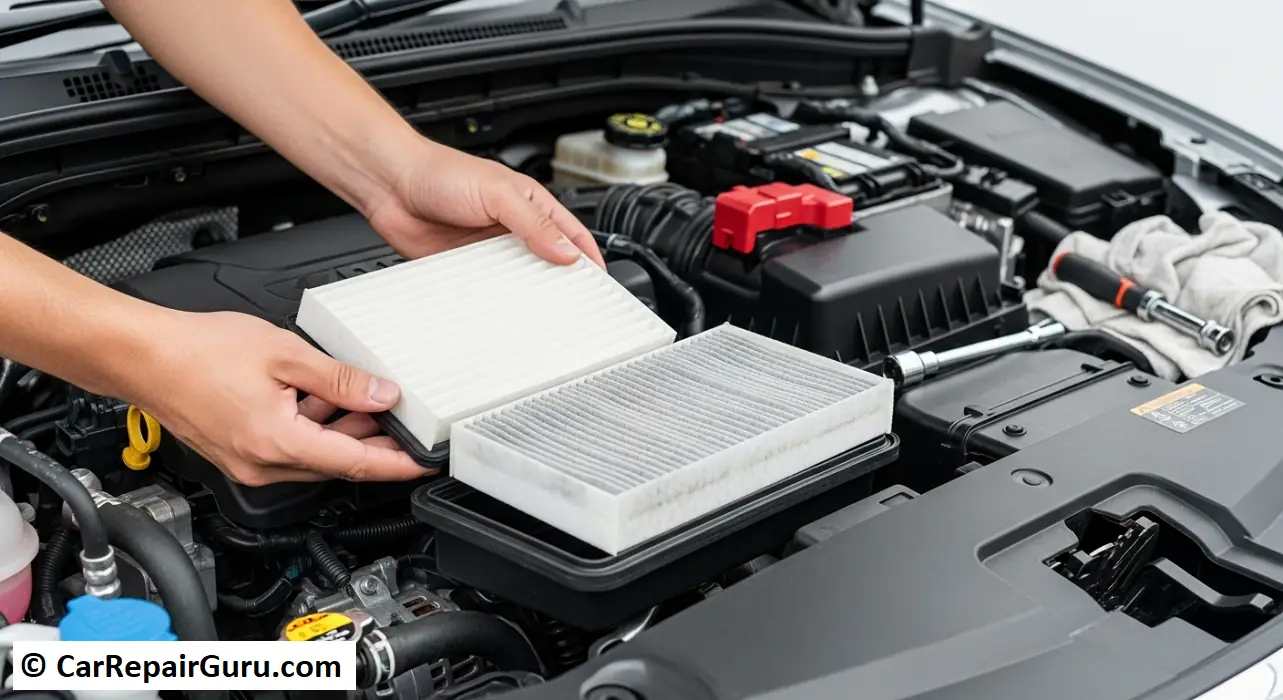
Looking for a simple way to improve your car’s gas mileage and performance without a trip to the mechanic? You’ve found it. While many car maintenance tasks feel intimidating, replacing your engine air filter is one of the easiest, quickest, and most impactful jobs you can do yourself. Think of it as a 5-minute investment that pays you back every time you drive.
But first, let’s clear up one common point of confusion. Your car has two main air filters: the engine air filter and the cabin air filter. The cabin filter cleans the air you breathe inside the car. The engine air filter, which is our focus today, protects the engine itself. It’s the true unsung hero of your vehicle’s health.
In this guide, we’ll walk you through everything you need to know: why this simple part is so crucial, how to tell when it’s time for a change, and a step-by-step tutorial on how to replace your car air filter like a pro.
Why Replacing Your Engine Air Filter is So Important
Think of your engine air filter as your car’s lungs. For your engine to run, it needs to mix fuel with a precise amount of clean oxygen. The air filter’s job is to stop all the nasty stuff—dust, pollen, insects, and road debris—from getting sucked into the sensitive components of your engine.
When the filter is clean, air flows freely. But over time, it gets clogged. A dirty, clogged filter literally suffocates your engine, forcing it to work harder for every breath. Keeping it fresh provides some serious benefits.
Here are the key benefits of a new air filter:
Improved Fuel Efficiency
A restricted airflow from a clogged filter makes your engine burn more fuel to get the same amount of power. A new filter can improve your gas mileage, saving you money at the pump.
Increased Engine Performance and Horsepower
Your engine needs oxygen for combustion. More clean air means more efficient combustion, which translates directly to smoother acceleration and restored horsepower. You’ll feel the difference.
Reduced Emissions
When fuel burns more completely, your car produces fewer harmful exhaust emissions. It’s a small change that’s better for the environment.
Extended Engine Life
This is the big one. Even tiny particles of dirt and grit are abrasive. Letting them into your engine can cause scoring on cylinder walls, piston rings, and bearings, leading to expensive, long-term damage. The filter is your first and best line of defense.
Signs of a Bad Air Filter – When Should You Replace It?
Most car manufacturers recommend you change your engine air filter every 12,000 to 15,000 miles, or about once a year. However, if you frequently drive in dusty or polluted areas, you may need to do it sooner.
Instead of just following the mileage, it’s better to let your car tell you what it needs. Here are the most common signs of a bad air filter:
- Visibly Dirty Filter: The best way to check is to look. A new filter is usually white or off-white. If yours is dark gray, black, or filled with leaves and debris, it’s time for a change.
- Decreased Gas Mileage: Are you stopping for gas more often? A struggling engine is a thirsty engine.
- Sluggish Acceleration: If your car feels hesitant or slow to respond when you press the gas, it might be starving for air.
- Check Engine Light Is On: A significant restriction in airflow can throw off air-fuel sensors, triggering the dreaded check engine light.
- Unusual Engine Sounds: When the engine first starts, you might hear a slight sputtering or coughing sound as it struggles to draw in enough air.
- Black Smoke from Exhaust: In some cases, a rich air-fuel mixture (not enough air) can result in unburned fuel leaving the exhaust as black smoke.
What You’ll Need – Tools & Materials
One of the best parts of this DIY car air filter replacement is that it requires very few tools—and sometimes none at all.
The Right Air Filter
This is the only thing you absolutely must have. You can find the correct part by checking your owner’s manual or by using the vehicle lookup tool on an auto parts website. All you need is your car’s year, make, model, and engine size.
Basic Tools (If Any)
Check your air filter housing first. Many are held shut by simple metal clips you can undo with your fingers. If not, you might need one of the following:
A Phillips or flathead screwdriver
A small socket wrench set
Safety & Cleaning Gear
Gloves (optional, but keeps your hands clean)
A rag or a small shop vacuum (for cleaning out the housing)
Choosing the Right Air Filter for Your Car
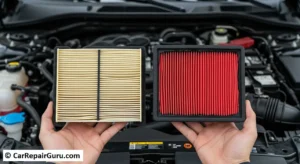
Walking into an auto parts store or browsing online can present you with a few choices. Let’s break down what they mean so you can pick the perfect filter for your needs.
How to Find the Correct Part Number
The number one rule is that the filter must be an exact fit. An ill-fitting filter will create gaps, allowing dirty air to bypass it completely, defeating its purpose. Always double-check that the part number is correct for your specific vehicle before buying. When in doubt, take your old filter with you to the store to match it up.
OEM vs. Aftermarket Filters
OEM (Original Equipment Manufacturer): This is the exact same filter your car was built with at the factory. It’s a guaranteed fit with reliable quality, but it’s typically the most expensive option, especially from a dealership.
Aftermarket: These are made by other companies (like Fram, WIX, or store brands). They are designed to meet or exceed OEM specifications and are almost always more affordable. For most drivers, a quality aftermarket filter is the perfect blend of performance and value.
Standard Paper vs. Reusable Performance Filters
Standard (Disposable): These are the most common and cost-effective filters. Made of pleated paper media, they provide excellent filtration for everyday driving and are simply thrown away and replaced when dirty.
Reusable (Washable): Brands like K&N make high-flow filters from materials like oiled cotton gauze. They have a higher upfront cost but can last the life of your vehicle because you can wash, re-oil, and reinstall them. They may offer a tiny increase in airflow and horsepower, but they require more maintenance. For the average driver, a standard disposable filter is the most practical choice.
Step-by-Step Guide – How to Change Your Engine Air Filter
Ready? This should only take a few minutes. Let’s get it done.
Step 1 – Park and Open the Hood
Park your car on a flat, level surface and make sure the engine is off and the parking brake is on. Open the hood and secure it with the prop rod.
Step 2 – Locate the Air Filter Housing
Look for a large, black plastic box near the top or side of your engine. It’s called the air filter housing or airbox. You’ll see a large, thick hose or duct leading out of it, which directs the clean air into the engine.
Step 3 – Open the Housing
This is the most variable step. Look at the lid of the housing. You’ll see one of two things:
- Metal Clips: Most modern cars use simple spring-loaded clips. Just pull them back with your fingers to release the lid.
- Screws: Some housings are secured with a few Phillips or hex-head screws around the perimeter. Use your screwdriver or socket wrench to remove them. Keep them somewhere safe so you don’t lose them!
Step 4 – Remove the Old Air Filter
Lift the cover of the housing. Inside, you’ll see the old filter. Simply lift it straight out. Pay attention to which way it’s facing—the rubber rim usually goes down to create a seal.
Pro Tip: Before you put the new filter in, take a moment to wipe out the inside of the airbox with a rag or use a vacuum to clear out any leaves, dirt, or dead bugs that have collected in the bottom.
Step 5 – Install the New Air Filter
Take your new filter and place it inside the housing, making sure it sits flat and snug. The rubber rim should create a tight seal all the way around. Wiggle it gently to ensure it’s seated properly.
Step 6 – Close the Housing and Secure It
Place the cover back on top, making sure it’s aligned correctly. If you have clips, snap them back into place. If you have screws, tighten them until they are snug, but be careful not to overtighten and crack the plastic. Give the housing a gentle tug to make sure it’s secure.
That’s it! You’ve just completed a DIY car air filter replacement.
5 Common Mistakes to Avoid When Replacing Your Air Filter
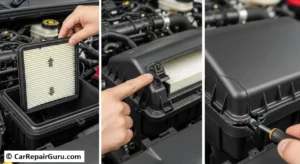
This job is simple, but a few small mistakes can cause big problems. Here’s what to watch out for:
- Installing the Filter Upside Down: The filter is designed to seal in one direction. If it’s upside down, it won’t seal properly, allowing dirty air to get sucked around the edges and into your engine.
- Forgetting to Clean the Airbox: Dropping a new filter on top of a pile of leaves and dirt defeats the purpose. That debris can get sucked right into your engine the moment you start the car.
- Not Securing the Housing Properly: A loose cover or unlatched clip creates a massive air leak. This lets in unfiltered air and can confuse your car’s sensors, hurting performance and potentially triggering a check engine light.
- Damaging Clips or Overtightening Screws: The airbox is plastic. Be gentle. Forcing a clip can break it, and overtightening a screw can crack the housing. A cracked housing is an air leak that requires a costly replacement.
- Forgetting to Reconnect Sensors: Some vehicles have a Mass Airflow (MAF) sensor or other wires attached to the airbox lid or ducting. If you had to unplug anything to get the lid off, you must plug it back in. Forgetting to do this will almost certainly cause your car to run poorly and turn on the Check Engine Light.
DIY vs. Professional – Car Air Filter Replacement Cost
So, how much money did you just save? The difference is significant.
- DIY Cost: $15 – $50. Your only expense is the cost of the replacement filter itself, which varies by brand and vehicle.
- Professional Cost: $50 – $100+. At a quick-lube shop or dealership, you’ll pay for the same filter plus a marked-up labor charge for the 5 minutes of work.
By investing a few minutes of your time, you can easily save $50 or more.
A Small Task with Big Rewards
Congratulations! You now know everything you need to replace your car air filter. It’s a small, simple task, but its impact on your car’s health, performance, and fuel economy is enormous. By taking on this easy DIY project, you not only save money but also become more connected and confident in maintaining your own vehicle.
Now that you’ve mastered the engine air filter, what’s next? You have the skills. Keep that momentum going
Frequently Asked Questions
Can I just clean my car air filter instead of replacing it?
For standard paper filters, the answer is no. Trying to wash them or blow them out with compressed air can create microscopic tears in the filter media, rendering them useless. They are designed to be disposable. The only exception is for specifically designed reusable/washable filters.
How long does it take to replace a car air filter?
For a first-timer, it might take 10 minutes. Once you know what you’re doing, it’s genuinely a 2- to 5-minute job on most vehicles.
What’s the difference between an engine air filter and a cabin air filter?
The engine air filter cleans the air going into your engine to ensure proper combustion. The cabin air filter cleans the air that comes through your AC and heat vents into the car for you to breathe. They are two different parts in two different locations.
What happens if you don’t change your air filter?
A severely clogged filter will lead to poor performance, terrible fuel economy, and increased engine strain. Eventually, it can become so restrictive that it triggers a check engine light or contributes to long-term wear and tear on expensive engine components.
